Flower Horn Adult Pellets – Omega-3/6 & Astaxanthin-Enriched Pellets, Premium Fish Nutrition, Tailored for Flower Horn Fish, Ensuring a Healthy and Vibrant Aquarium Experience
£14.00
Welcome these beautiful Flower Horn fish into your aquarium with our Omega-3/6 & Astaxanthin-Enriched Adult Pellets. Designed for optimal fish feeding, these high-protein pellets enhance color and promote flourishing health in cichlids. Perfect for creating vibrant aquatic environments.
Nutritional Overview
Nutritional Analysis – Flower Horn Adult Pellets – Omega-3/6 & Astaxanthin-Enriched Pellets
| Nutrient | Content | Benefit |
|---|---|---|
| Protein | High Quality | Growth & muscle development |
| Vitamins | Enriched Formula | Immune system support |
| Color Enhancers | Natural Carotenoids | Vibrant coloration |
| Probiotics | Digestive Support | Healthy gut flora |
✓ Nutritional Benefits
Supports immune health, promotes growth, enhances coloration.
The Flower Horn Adult Pellets are meticulously crafted to meet the dietary needs of your aquatic companions. Enriched with Omega-3 and Omega-6 fatty acids, these pellets promote optimal growth and enhance the vibrant colors of your flower horn fish. Each pellet is formulated with high-quality ingredients, ensuring that your fish receive a balanced diet that supports their health and vitality. The inclusion of Astaxanthin, a powerful antioxidant, further enhances the coloration of your fish, making them truly stand out in your aquarium. The nutritional profile is designed to cater specifically to the needs of adult flower horn fish, providing them with the essential nutrients required for their well-being and longevity.
✓ Feeding Specifications
Feed 2-3 times a day, adjusting portions based on fish behavior.
Feeding Instructions
When introducing Flower Horn Adult Pellets to your fish’s diet, it’s essential to do so gradually. Start by mixing a small amount of the pellets with their current food to allow them to acclimate to the new diet. Over the course of a week, increase the proportion of the pellets until they are fully transitioned to the new food. This gradual introduction helps prevent digestive issues and ensures that your fish accept the new food. Monitor their feeding behavior and adjust the quantity as needed, ensuring that they are consuming the pellets within a few minutes to avoid water quality problems.
⚠ Important Note on Nutritional Needs
Ensure a balanced diet by incorporating other food types for optimal health.
Ingredient Analysis
The Flower Horn Adult Pellets are made from high-quality ingredients that are carefully selected to provide optimal nutrition for your fish. The primary ingredients include fish meal, which is a rich source of protein, and various plant-based ingredients that supply essential vitamins and minerals. The inclusion of Omega-3 and Omega-6 fatty acids is derived from natural sources, ensuring that your fish receive the best possible nutrition. Additionally, the pellets are fortified with vitamins and minerals that support overall health, growth, and coloration. This thoughtful formulation ensures that your fish friends thrive in their aquatic environment.
✓ Quality Ingredients
Fish meal, plant-based ingredients, Omega-3 and Omega-6 fatty acids.
Health Benefits
The Flower Horn Adult Pellets are not just designed for growth; they also play a crucial role in enhancing the overall health of your fish. The high protein content supports muscle development and energy levels, while the Omega fatty acids contribute to a robust immune system, helping your fish resist diseases. The antioxidants present in the pellets, particularly Astaxanthin, are known to improve coloration and promote overall vitality. A well-nourished fish is more likely to exhibit vibrant colors, active behavior, and a longer lifespan. Regular feeding of these pellets can help you maintain a thriving aquarium environment where your aquatic companions flourish.
✓ Health Improvement
Supports immune system, enhances coloration, promotes vitality.
Water Quality Impact
Maintaining water quality is essential for the health of your flower horn fish, and the type of food you provide can significantly impact this. The Flower Horn Adult Pellets are designed to minimize waste, which helps maintain cleaner water conditions. By ensuring that your fish consume the pellets within a few minutes, you reduce the chances of leftover food decomposing in the tank. Regular water changes and monitoring of water parameters are still necessary, but choosing high-quality food like these pellets can contribute to a healthier aquatic environment. Always test your water regularly to ensure it remains within the ideal parameters for your fish.
✓ Water Quality Maintenance
Regular testing and changes are essential for a healthy aquarium.
Special Dietary Needs
Certain conditions may require adjustments to your flower horn’s diet. For instance, during breeding periods, fish may benefit from higher protein diets to support reproductive health. Additionally, if your fish are recovering from illness or stress, consider providing a diet enriched with vitamins and minerals to aid in their recovery. Always consult with an aquatic veterinarian if you notice any signs of distress or illness in your fish, as they can provide tailored dietary recommendations based on your fish’s specific needs.
✓ Dietary Adjustments
Consider higher protein diets during breeding or recovery.
Feeding Techniques
To encourage your flower horn fish to accept the pellets, consider using feeding techniques that stimulate their natural instincts. Scatter feeding, where you spread the pellets across the surface of the water, can mimic the natural foraging behavior of fish. Alternatively, you can use a feeding ring to keep the pellets contained in a specific area, making it easier for your fish to locate and consume them. Observing your fish during feeding can provide insights into their preferences and help you refine your feeding techniques for optimal results.
✓ Feeding Techniques
Use scatter feeding or feeding rings to encourage natural foraging.
Quality Assurance
The Flower Horn Adult Pellets are produced under stringent quality control measures to ensure that they meet the highest standards of safety and nutrition. Each batch undergoes rigorous testing to confirm that it is free from contaminants and harmful additives. This commitment to quality assurance means that you can rest assured that you are providing your fish friends with a safe and nutritious diet. Additionally, the pellets are manufactured using sustainable practices, ensuring that you are contributing to the health of aquatic ecosystems while caring for your fish.
✓ Quality Commitment
Produced under strict quality control for safety and nutrition.
Comparison Guide
When selecting fish food for your flower horn fish, it is essential to compare different options to find the best fit for your needs. The Flower Horn Adult Pellets stand out due to their high protein content, Omega fatty acids, and natural color enhancers. While other fish foods may offer similar benefits, the specific formulation of these pellets is tailored to the unique dietary requirements of flower horn fish. Always consider the nutritional profile, ingredient quality, and feeding recommendations when evaluating different products to ensure that you are providing the best care for your aquatic companions.
✓ Comparison Factors
Evaluate protein content, ingredient quality, and specific dietary needs.
Expert Recommendations
Aquarists and fish care experts recommend the Flower Horn Adult Pellets as a staple diet for flower horn fish due to their comprehensive nutritional profile. Regular use of these pellets, combined with occasional treats and supplements, can lead to healthy growth and vibrant coloration. Additionally, maintaining a consistent feeding schedule and monitoring your fish’s health are crucial components of successful flower horn care. By following these guidelines and utilizing high-quality food, you can ensure that your fish friends thrive in their aquatic environment.
✓ Expert Advice
Utilize high-quality food and maintain a consistent feeding schedule.
Nutritional Science
The formulation of Flower Horn Adult Pellets is backed by nutritional science, ensuring that every ingredient serves a purpose in promoting the health and vitality of your fish. Research into fish nutrition has shown the importance of protein, fatty acids, and vitamins in supporting growth, immune function, and coloration. By incorporating these findings into the pellet formulation, manufacturers can provide a product that meets the specific needs of flower horn fish. Continuous advancements in fish nutrition research contribute to the development of high-quality fish foods that support the well-being of aquatic companions.
✓ Scientific Backing
Formulated based on research into fish nutrition and health.
Optimal Feeding Schedule
8:00 AM
Main portion of daily nutrition
6:00 PM
Smaller portion to maintain energy
Feeding Tips
- Feed only what fish can consume in 2-3 minutes
- Remove uneaten food to maintain water quality
- Adjust quantity based on fish activity and temperature
- Fast fish one day per week for digestive health
.feeding-schedule {
background: linear-gradient(135deg, #fff9c4 0%, #f0f4c3 100%);
padding: 20px;
border-radius: 12px;
margin: 20px 0;
}
.schedule-timeline {
display: flex;
justify-content: space-around;
margin: 20px 0;
}
.timeline-item {
text-align: center;
flex: 1;
margin: 0 10px;
}
.time {
background: #ff9800;
color: white;
padding: 10px;
border-radius: 8px;
font-weight: bold;
margin-bottom: 10px;
}
.feeding {
background: white;
padding: 15px;
border-radius: 8px;
box-shadow: 0 2px 4px rgba(0,0,0,0.1);
}
.feeding-tips {
background: white;
padding: 15px;
border-radius: 8px;
margin-top: 20px;
}
.feeding-tips ul {
list-style-type: none;
padding: 0;
}
.feeding-tips li {
padding: 8px 0;
border-bottom: 1px solid #e0e0e0;
}
Frequently Asked Questions
Q: What tank size is required for Flower Horn fish?
Flower Horn fish are known for their vibrant colours and distinctive personalities. To provide a suitable environment, a minimum tank size of 200 litres is recommended for a single adult Flower Horn. This size allows ample swimming space and helps maintain stable water parameters. A larger tank is even better, especially if you plan to keep multiple fish or want to enhance the tank’s aesthetic with decorations and plants. Ensure the tank is well-filtered, as these fish can produce a significant amount of waste, impacting water quality.
✓ Expert Tip
Consider using a tank divider if housing multiple Flower Horns, to reduce territorial disputes.
Q: What water parameters do Flower Horn fish require?
Maintaining optimal water parameters is crucial for the health of your Flower Horn fish. They thrive in water with a pH level between 6.8 and 8.0, and a temperature range of 25°C to 30°C. Regularly test your water for ammonia, nitrites, and nitrates, ensuring ammonia and nitrite levels are at 0 ppm, while nitrates should be below 20 ppm. It’s advisable to perform partial water changes of 20-30% weekly to maintain water quality and remove accumulated toxins.
✓ Expert Tip
Utilise a high-quality water conditioner to remove chlorine and chloramines when doing water changes.
Q: How often should I feed Flower Horn fish?
Feeding your Flower Horn fish properly is essential for their growth and health. It is recommended to feed them 2-3 times a day with high-quality pellets, such as Omega-3/6 and Astaxanthin-enriched pellets. The quantity should be enough that they consume it within 5 minutes, preventing overfeeding and water quality issues. Observing their behaviour can help determine if they are satisfied; if they appear eager to eat, you may need to adjust amounts accordingly. Incorporating occasional live or frozen foods can also enhance their diet.
✓ Expert Tip
Vary their diet with occasional treats like bloodworms or brine shrimp to promote colour enhancement.
Q: What are the best tank mates for Flower Horn fish?
Choosing the right tank mates for Flower Horn fish can be challenging due to their territorial nature. It is generally best to house them alone or with robust species that can withstand their aggressive behaviour. Suitable tank mates may include certain types of cichlids, such as Jack Dempseys or larger catfish. Avoid smaller or more docile fish, as they may become targets. Always monitor interactions closely when introducing new companions, and be prepared to separate them if aggression occurs.
✓ Expert Tip
Introduce new fish in a separate tank first to observe compatibility before adding them to the main tank.
Q: How do I properly acclimatise Flower Horn fish to my aquarium?
Acclimatising your Flower Horn fish is crucial to minimise stress and promote a successful transition. Start by floating the sealed bag containing the fish in your aquarium for about 15-20 minutes, allowing the water temperature to equalise. After this, gradually mix small amounts of your aquarium water into the bag every 10 minutes for an hour. This process helps the fish adjust to differences in water chemistry. Finally, gently net the fish into the tank, avoiding adding any bag water to your aquarium.
✓ Expert Tip
Perform acclimatisation during low light conditions to reduce stress and encourage exploration.
Q: What are the signs of healthy Flower Horn fish?
A healthy Flower Horn fish exhibits vibrant colours, clear eyes, and active swimming behaviour. They should have a well-formed body with no visible signs of swelling or lesions. Observe their feeding habits; a healthy fish will eagerly accept food and exhibit normal digestion. Additionally, monitor for consistent fin movement and the absence of any erratic swimming patterns, which may indicate stress or illness. Regular health checks will help you identify any changes in behaviour that require attention.
✓ Expert Tip
Keep a journal of your fish’s behaviour and health to track any changes over time.
Q: How do I successfully breed Flower Horn fish?
Breeding Flower Horn fish can be a rewarding yet challenging endeavour. First, ensure you have a suitable breeding pair; they should be mature, typically around 1-2 years old. Provide a breeding tank with optimal water conditions (pH 6.5-7.5, temperature 27°C-30°C) and include flat surfaces for spawning. After fertilisation, the female will lay eggs, which should be kept safe from potential threats. Monitor the tank closely, as both parents may exhibit aggressive behaviour during this time. After the eggs hatch, provide appropriate food for the fry, such as finely crushed pellets or baby brine shrimp.
✓ Expert Tip
Create a separate nursery tank for fry to ensure their safety and proper growth.
Q: What temperature should I maintain for Flower Horn fish?
Maintaining the correct temperature is vital for the health and well-being of Flower Horn fish. They thrive in warmer waters, ideally within the range of 25°C to 30°C. Sudden temperature fluctuations can lead to stress and health issues, so it is advisable to use a reliable aquarium heater along with a thermometer to monitor the temperature accurately. Regularly check the temperature, especially during seasonal changes, to ensure your fish remain comfortable and healthy.
✓ Expert Tip
Consider using a heater with an adjustable thermostat for precise temperature control.
Q: How long do Flower Horn fish typically live in captivity?
With proper care, Flower Horn fish can live between 10 to 15 years in captivity. Their longevity is significantly influenced by water quality, diet, and overall tank conditions. Regular maintenance, including water changes and monitoring for diseases, will help ensure a healthy environment. Additionally, providing a balanced diet enriched with essential nutrients, such as Omega-3/6 and Astaxanthin, will contribute to their longevity and vibrant colours. Keeping them in a suitable tank size also plays a crucial role in their lifespan.
✓ Expert Tip
Document your fish’s diet and behaviour to identify trends that may enhance their lifespan.
Q: What type of substrate is most suitable for Flower Horn fish?
When selecting a substrate for your Flower Horn tank, opt for a fine to medium-sized gravel or sand. This type of substrate is easier for your fish to navigate and helps prevent injury. Additionally, it promotes beneficial bacteria growth, which aids in maintaining a healthy tank environment. Avoid sharp substrates, as these can harm your Flower Horn’s delicate fins and skin. Regularly vacuum the substrate during water changes to remove waste and uneaten food, ensuring a clean habitat for your fish.
✓ Expert Tip
Incorporate live plants into the substrate for added aesthetics and to enhance water quality.
Q: What behavioural patterns should I expect from Flower Horn fish?
Flower Horn fish are known for their unique and often entertaining behavioural patterns. They tend to be quite interactive, displaying curiosity towards their surroundings and their keepers. Expect them to establish territories within the tank, often leading to displays of aggression towards perceived intruders. They may also exhibit nesting behaviours during breeding season. Observing their behaviours can provide insights into their mood and health; for example, excessive hiding or lethargy may indicate stress or illness.
✓ Expert Tip
Provide hiding spots and decorations to reduce stress and encourage natural behaviours.
Q: How can I prevent common diseases in Flower Horn fish?
Preventing diseases in Flower Horn fish largely relies on maintaining a clean and stable environment. Regular water changes, adequate filtration, and proper feeding practices are fundamental to their health. Quarantine new fish before introducing them to your main tank to prevent disease transmission. Additionally, monitor your fish for signs of stress, such as changes in colour or behaviour, which can indicate underlying health issues. Providing a balanced diet enriched with Omega-3/6 can also enhance their immune system and overall health.
✓ Expert Tip
Keep a close eye on water parameters and adjust as necessary to avoid stress-related diseases.
Q: What lighting conditions do Flower Horn fish prefer?
Flower Horn fish thrive in moderate to bright lighting conditions. They benefit from having a well-lit tank, which enhances their vibrant colours and encourages natural behaviour. However, avoid excessive direct sunlight that can lead to temperature fluctuations and promote algae growth. LED lights are a popular choice, as they provide sufficient brightness and can be adjusted for intensity. Ensure you maintain a light cycle of around 10-12 hours a day to simulate natural conditions and promote healthy activity levels.
✓ Expert Tip
Consider using a timer for your lighting to ensure consistent light cycles.
Q: How do I recognise stress in Flower Horn fish?
Recognising stress in Flower Horn fish is crucial for their well-being. Common signs include hiding, erratic swimming, loss of appetite, and colour fading. If your fish is constantly at the bottom of the tank or exhibiting aggressive behaviour towards tank mates, it may be stressed. Additionally, observing for clamped fins or excessive scratching against objects can indicate discomfort. Regular monitoring and addressing any changes in their environment, such as water quality or tank mates, can help alleviate stress.
✓ Expert Tip
Create a stable and enriched environment to minimise stress triggers.
Q: What natural habitat conditions should I replicate for Flower Horn fish?
To provide a suitable habitat for Flower Horn fish, replicate their natural environment as closely as possible. They originate from freshwater rivers in Central America, which means they thrive in slightly acidic to neutral pH levels and warm temperatures. Incorporate hiding spots using rocks and driftwood, along with live plants if space allows. This not only mimics their natural habitat but also enhances their comfort and reduces stress. Regularly monitor water quality and maintain a clean environment to keep them healthy.
✓ Expert Tip
Research the Flower Horn’s specific environmental needs to create an ideal habitat.
| size | 500ml/190g |
|---|

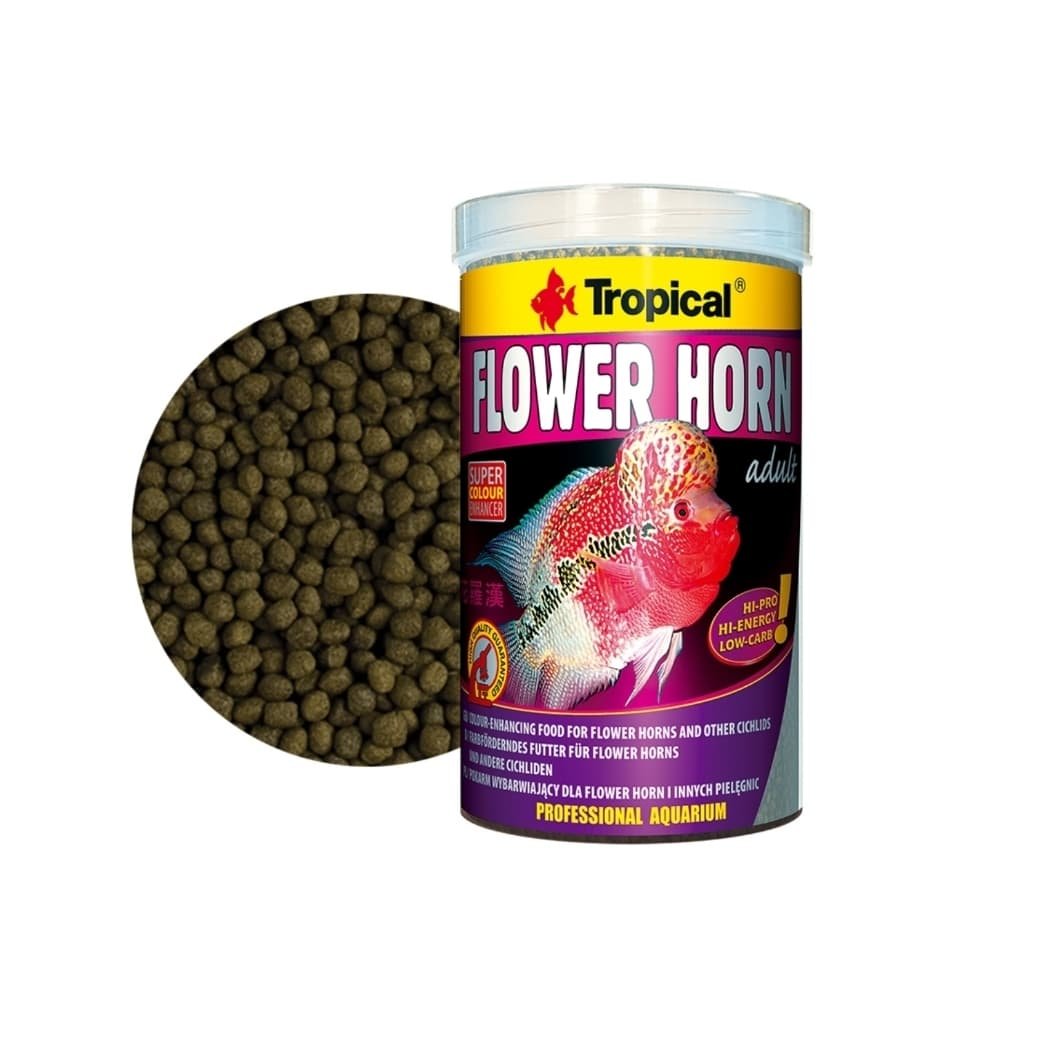
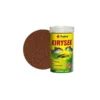
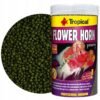
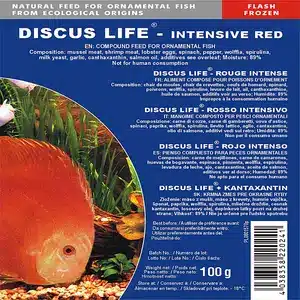




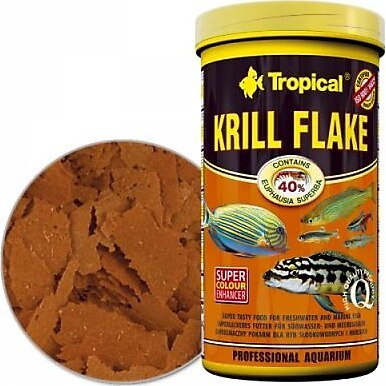

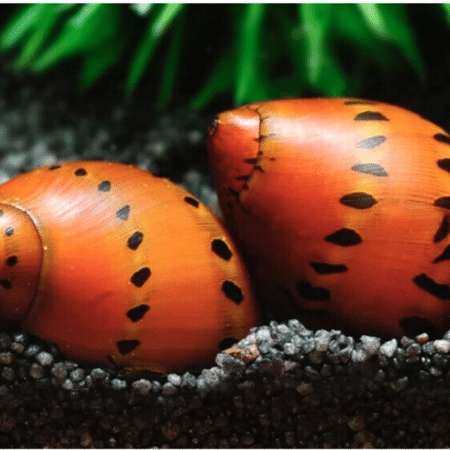

Emily Carter (verified owner) –
As a passionate aquarium hobbyist, I am always on the lookout for high-quality fish feeding options, and the Flower Horn Adult Pellets have truly impressed me. After using these pellets for about a month, I’ve noticed a remarkable improvement in my Flower Horn’s coloration and overall health. The Omega-3/6 and astaxanthin-enriched formula seems to bring out their vibrant hues beautifully! I also appreciate that these pellets are easy for my fish to digest; they don’t cloud the water as some other dry food options do. Compared to my previous brand, which often left a mess, these pellets are definitely superior. My fish are thriving, and their energy levels are fantastic! I highly recommend these pellets to anyone who keeps Flower Horns or other cichlids. Just make sure to monitor feeding amounts since they do tend to get a bit greedy! Overall, this product has become a staple in my aquarium supplies, and I will continue using it for years to come.